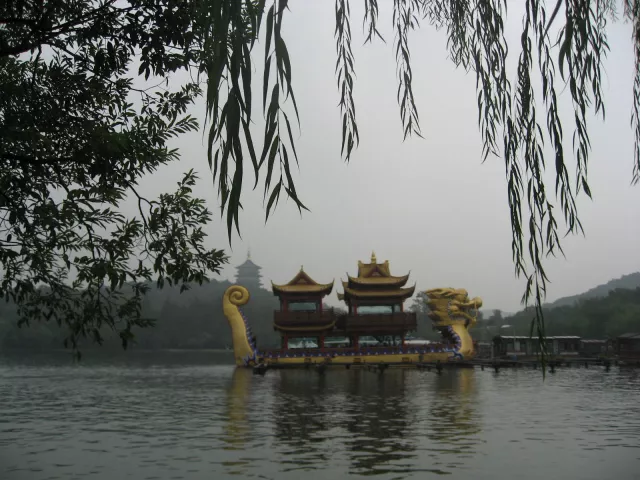Summary of Hangzhou’s Historical Journey
- Qin Dynasty (221-206 BC) – The establishment of Hangzhou as part of China’s first empire.
- Sui Dynasty (581-618) – The extension of the Grand Canal, enhancing Hangzhou’s trade.
- Tang Dynasty (618-907) – The rise of Hangzhou’s population and its regional power.
- Southern Song Dynasty (1127-1279) – The golden age of prosperity and cultural growth.
- Yuan Dynasty (1206-1368) – Marco Polo’s famous visit and recognition of Hangzhou as a paradise.
- Ming and Qing Dynasties (1368-1644, 1616-1911) – Continued prosperity, especially in silk production.
- Recent History – Recovery and modern growth since the opening of China.
- Visiting Historical Hangzhou – Tips for exploring the city’s rich history.
Today, Hangzhou is booming again. Not only is it a major tourist destination for its famous West Lake, but it’s also home to some of China’s biggest innovative businesses, like Alibaba.
However, Hangzhou is also an ancient city with a rich and complex history. Here is a brief overview of Hangzhou’s historical development.
Qin Dynasty (221-206 BC)
The first emperor of China, Qin Shi Huang, renowned for building an incredible mausoleum to himself known today as the Terracotta Warriors Museum, reached Hangzhou and declared the region a part of his empire.
Sui Dynasty (581-618)
The Grand Canal, originating in Beijing, was extended to Hangzhou, linking the city to one of the most profitable trading routes in China. Consequently, Hangzhou’s power and prosperity continued to rise.
Tang Dynasty (618-907)
During this period, Hangzhou’s population grew significantly, alongside its regional prestige, as it served as the capital for the Wuyue kingdom in the late tenth century.
Southern Song Dynasty (1127-1279)
This era marked Hangzhou’s golden age of prosperity, transforming it into the capital city of the Southern Song Dynasty. Local industry thrived, and the worship of Taoism and Buddhism peaked, resulting in the construction of many temples that can be visited today.
Yuan Dynasty (1206-1368)
Under Mongol rule, Marco Polo visited Hangzhou in 1290. He was so entranced by the beauty of the Xi Hu, or West Lake, that he popularized a famous Chinese saying: Shang you tiantang, xia you Suhang. This translates to “in heaven there is paradise, on earth there is Su[zhou] and Hang[zhou].” Therefore, the Chinese have affectionately termed Hangzhou a “Paradise on Earth.”
Ming and Qing Dynasties (1368-1644, 1616-1911)
During these dynasties, Hangzhou continued to grow, thanks to its thriving silk weaving industries, becoming the center for silk production throughout China.
Recent History
Following the collapse of the Qing Dynasty and the establishment of the republic, Hangzhou experienced a decline in economic status, losing ground to Shanghai in the 1920s due to foreign stakes. Internal conflict resulted in significant loss of life and destruction across the city.
However, since the opening of China in the 20th century, Hangzhou has been experiencing a resurgence. Increased foreign investment and a cluster of China’s most successful private enterprises, including Alibaba, have restored Hangzhou’s status as one of the most prosperous cities in the nation.
How to Visit Historical Hangzhou
Exploring historical Hangzhou is relatively straightforward compared to other rapidly developing cities. The West Lake offers a beautiful starting point for grasping the city’s history, with its scenic views and pleasant walks. Moreover, you can explore the historical pagodas and temples nestled in the hills. A stroll down Qinghefang Historic Street provides further insight into the city’s ancient past, amidst bustling vendors and traditional architecture.





